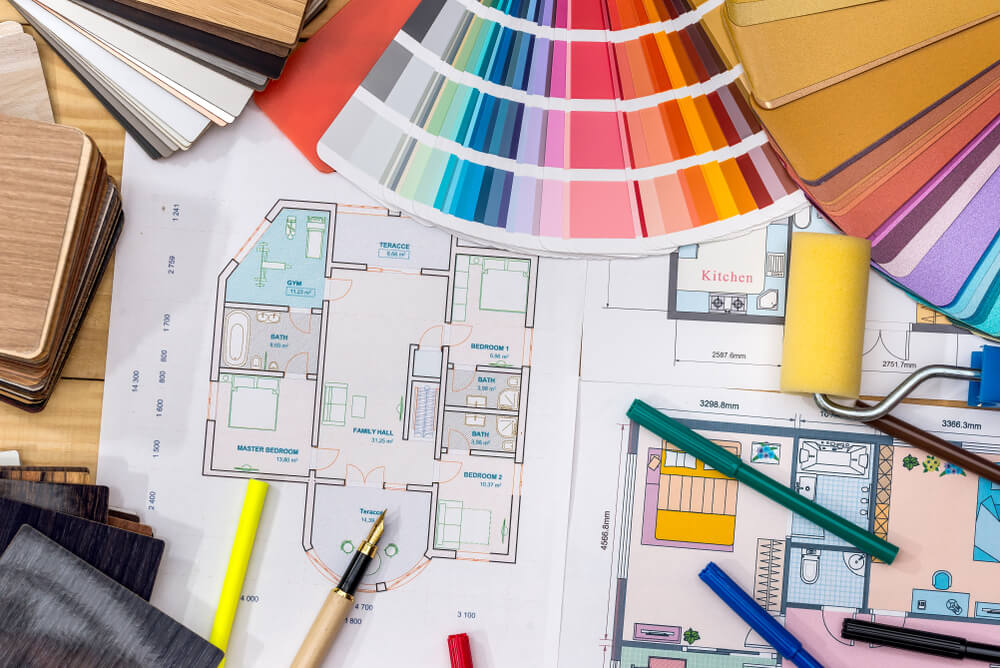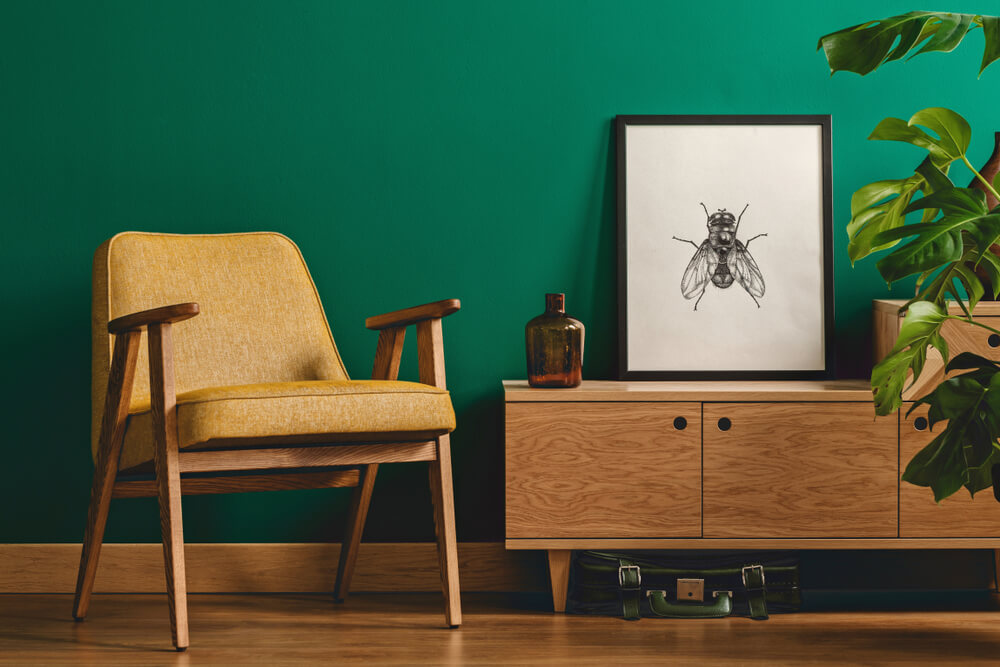Should Interior Design be Considered an Art Form

Many people consider interior design to be a means of expression whereby questions of shape, color, and space converge. As a result, we often find ourselves asking the following question: should interior design be considered an art form?
As the name suggests, experts in interior design are charged with planning the decor for our homes. Their training teaches them all about creativity and gives them the tools to develop and implement their plans.
They learn to move beyond stereotypes; instead, they renew and evolve their designs over time, sparking transformations which are an essential part of interior design’s role as an art form. Essentially, interior design follows similar systems to other disciplines, using almost identical methods.
Basic principles of artistic aesthetics

In essence, interior design offers an aesthetic, which can range from the most basic to the most complex, or even combine both concepts at once to create a more complete design.
Its overall look is the fundamental pillar upon which the whole design is based. The elements that make up a room need to have the right layout and complement one another.
Interior designers strive to create proportion and to avoid clashing colors and a chaotic layout. In this sense, you might say that the designer’s aim is to create an aesthetic which delights the senses.
Art is a means of expression which aims to create a specific aesthetic.
Interior design demands creativity

The person in charge of designing an interior has to have the ideas and resources to work with, but what they need most is creativity.
- The first thing they need to do is study the space so that they know where everything should go, and how they can best use color, light, and shape.
- A designer’s work mainly involves considering the potential of each room, trying to work out how to make the very most of the space, and how best to organize the furniture.
- Their designs should promote energy and dynamism.
- The placement of all the different elements should be consistent throughout the house and must be in line with the designer’s ideas. Essentially, they need to tie up all the loose ends to reach the ultimate goal: harmony.
- The designer’s role is to help an idea take shape. Everything they do needs to work towards this goal.
Inspiration is the opportunity of genius.
Complementary colors

Of course, no interior is complete without color, so it is essential to have the right distribution of colors in order to create harmony.
- You need to avoid tension and clashing colors.
- A designer knows which colors go well with which style, which work best in each room, and what kind of atmosphere each one can create.
- They also need to establish a dialogue between the shapes and the colors. Our gaze will naturally be directed toward specific points in the room, which can be given greater or lesser prominence depending on the colors used.
- Another essential factor to keep in mind is the walls. They are the barrier which defines each space and need to complement the furniture.
- Using the furniture to add color to your home is just like painting it.
Create dialogue

The layout needs to have a sense of order. It has to create a dialogue between every element which makes up the whole look. When it comes to interior design, nothing can be overlooked. There needs to be a sense of coherence and connection between everything.
Creating a connection between the furniture and its layout is essential. Every item needs to be placed exactly right so that it can carry out its specific function.
In the same way, it’s important to highlight another fundamental element: the decoration. Whether it be sculptures, paintings, rugs or plants, you can’t just choose them at random. They need to be in harmony with the style of the room as a whole.
No one can deny that once you’ve studied the various characteristics of interior design, it’s clear to see that this is a discipline which conforms to the principles of art in every way.
Many people consider interior design to be a means of expression whereby questions of shape, color, and space converge. As a result, we often find ourselves asking the following question: should interior design be considered an art form?
As the name suggests, experts in interior design are charged with planning the decor for our homes. Their training teaches them all about creativity and gives them the tools to develop and implement their plans.
They learn to move beyond stereotypes; instead, they renew and evolve their designs over time, sparking transformations which are an essential part of interior design’s role as an art form. Essentially, interior design follows similar systems to other disciplines, using almost identical methods.
Basic principles of artistic aesthetics

In essence, interior design offers an aesthetic, which can range from the most basic to the most complex, or even combine both concepts at once to create a more complete design.
Its overall look is the fundamental pillar upon which the whole design is based. The elements that make up a room need to have the right layout and complement one another.
Interior designers strive to create proportion and to avoid clashing colors and a chaotic layout. In this sense, you might say that the designer’s aim is to create an aesthetic which delights the senses.
Art is a means of expression which aims to create a specific aesthetic.
Interior design demands creativity

The person in charge of designing an interior has to have the ideas and resources to work with, but what they need most is creativity.
- The first thing they need to do is study the space so that they know where everything should go, and how they can best use color, light, and shape.
- A designer’s work mainly involves considering the potential of each room, trying to work out how to make the very most of the space, and how best to organize the furniture.
- Their designs should promote energy and dynamism.
- The placement of all the different elements should be consistent throughout the house and must be in line with the designer’s ideas. Essentially, they need to tie up all the loose ends to reach the ultimate goal: harmony.
- The designer’s role is to help an idea take shape. Everything they do needs to work towards this goal.
Inspiration is the opportunity of genius.
Complementary colors

Of course, no interior is complete without color, so it is essential to have the right distribution of colors in order to create harmony.
- You need to avoid tension and clashing colors.
- A designer knows which colors go well with which style, which work best in each room, and what kind of atmosphere each one can create.
- They also need to establish a dialogue between the shapes and the colors. Our gaze will naturally be directed toward specific points in the room, which can be given greater or lesser prominence depending on the colors used.
- Another essential factor to keep in mind is the walls. They are the barrier which defines each space and need to complement the furniture.
- Using the furniture to add color to your home is just like painting it.
Create dialogue

The layout needs to have a sense of order. It has to create a dialogue between every element which makes up the whole look. When it comes to interior design, nothing can be overlooked. There needs to be a sense of coherence and connection between everything.
Creating a connection between the furniture and its layout is essential. Every item needs to be placed exactly right so that it can carry out its specific function.
In the same way, it’s important to highlight another fundamental element: the decoration. Whether it be sculptures, paintings, rugs or plants, you can’t just choose them at random. They need to be in harmony with the style of the room as a whole.
No one can deny that once you’ve studied the various characteristics of interior design, it’s clear to see that this is a discipline which conforms to the principles of art in every way.
All cited sources were thoroughly reviewed by our team to ensure their quality, reliability, currency, and validity. The bibliography of this article was considered reliable and of academic or scientific accuracy.
Lava Oliva, Rocío: Interiorismo, Vértice, 2008.







